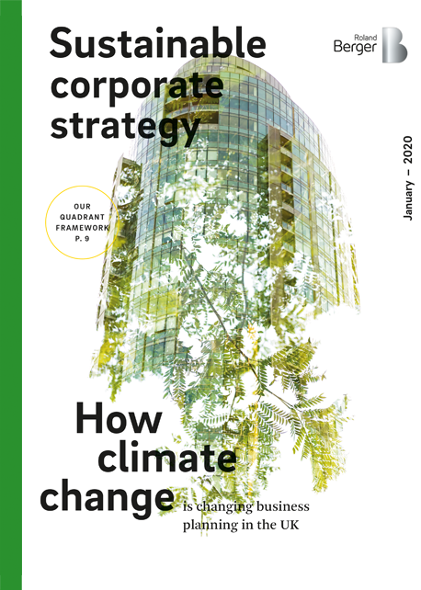Steering towards a sustainable corporate strategy
![{[downloads[language].preview]}](https://www.rolandberger.com/publications/publication_image/rb_stu_611_sustainable_business_planning_in_uk_cover_download_preview.png)
How to prepare for a corporate environmental strategy that contemplates climate change and carbon emissions and sets them at the core of future business planning.


A sustainable corporate strategy that answers the challenges of carbon emissions and climate change is defining the conversations of the next decade. Yet, many businesses are still ill-equipped to respond, whether by taking it as a matter of personal belief or treating it as an “afterthought” of their corporate planning. We believe that the environmental issues must lay at the heart of the competitive strategy. In this report, we help businesses understand where they currently are and what role they could play in the future. We do this by listing external and internal dynamics that must be considered when planning their environmental strategies and presenting actionable recommendations.

Roland Berger tailors a unique approach for each of their clients, with specific recommendations based on the quadrant framework that locates companies depending on the pressures behind their environmental strategies and how they have responded to it.

![{[downloads[language].preview]}](https://www.rolandberger.com/publications/publication_image/rb_stu_611_sustainable_business_planning_in_uk_cover_download_preview.png)
How to prepare for a corporate environmental strategy that contemplates climate change and carbon emissions and sets them at the core of future business planning.